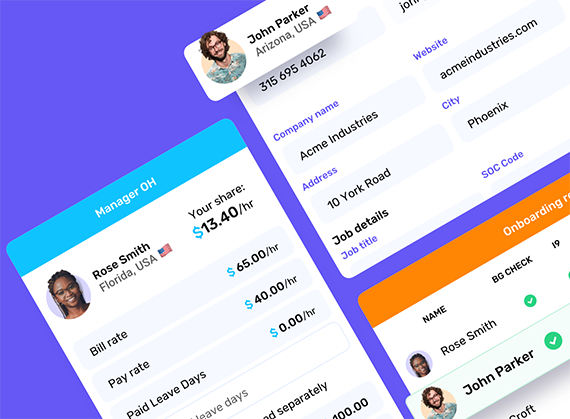Every recruiter wants to expand their income stream. It would probably also be nice if it would were more “steady stream” and less “trickle with an occasional flood,” right?
The question is, how?
First, let’s clear up some common confusion. We are not talking about recruiters earning fees on a contingent vs. retained basis here. That is a whole different topic.
Instead, this article is about how recruiters can earn income by meeting clients’ labor needs with contingent workers.
What is a Contingent Worker?
A contingent worker is someone who is both:
- Temporarily performing work for a company.
- Not directly employed as a full-time W-2 employee of that company.
With that being said, many types of workers fall under the “contingent” umbrella heading. These include:
- 1099 independent contractors working under a statement of work (SOW),
- Another company working on a project or product on a corp-to-corp basis,
- Paid interns, and
- W-2 contractors employed by a third-party Employer of Record service.
This last category can be enormously profitable for recruiters. Besides the sheer amount of money that can be made, there are additional benefits to building this side of your business in addition to your direct hire placements.
For example, in our current candidate’s market following the recession, you have probably experienced a frustratingly long time-to-fill. If your client desperately needs someone to fill a role but they seem reluctant to pull the trigger on a direct hire candidate (and your fee hangs in the balance!), offering a W-2 contractor can be the perfect solution.
W-2 contractors can benefit clients in many different scenarios—including short-term projects and “try-before-you-buy” situations—but they also benefit recruiters in a number of ways.
How Do Contingent Workers Increase a Recruiter’s Income?
Here are just a few of the ways W-2 contractors can add to a recruiter’s bottom line:
- Bypass companies dragging their feet with direct hires. Instead of waiting the increasingly long time it takes hiring managers to extend a direct hire job offer to your candidates, you can offer them the quicker, less permanent (and therefore less nerve-wracking) solution of a W-2 contractor. This way, your candidate and your direct hire fee aren’t waiting around, and you’re less likely to lose them both. After all, in this market, 44% of job offer rejections are because the candidate has already accepted another job (ERE Media). Hiring speed matters!
- Earn a consistent hourly fee for the duration of a contract placement. The big checks from direct placements are great, but the long gaps in between them? Not so great. Contract placements generate recruiter income every single hour the contractor works on contract. When you add contracting to your business, you will have a steadier stream of income–which means less dependency on “boom and bust” cycles.
- Have multiple contractors out at any given time, providing recruiter income for every hour they work. Some recruiters think that contract placements don’t pay enough to make them worth their time. However, even just having as few contractors out at the same time can bring in a respectable total hourly income. The more contractors you place, the more your hourly income compounds.
- Earn a conversion fee in addition to hourly contract profit if contractors get hired directly. Conversion fees can be the best of both worlds for recruiters. You get the hourly income for the length of the placement, PLUS a fee for the client to hire the contractor directly at the end of the contract! You can end up making even more than you would have if the candidate had been a direct hire from the start.
- If your contractor doesn’t work out, you don’t have to sacrifice the income made and time spent on them. Contract placements don’t tend to have the same guarantees attached to them as direct hire placements. It is understood by all parties that the placement has an end date and may not result in a direct hire. At worst, a recruiter may wind up having to find another contractor for a role if the first one didn’t work out–but they won’t have to return the income they earned already (as some recruiters must do when a direct hire placement ends too early).
- Place the same contractor repeatedly and earn their direct hire fee many times over. Even if you don’t earn a conversion fee on a contractor, you can end up with many times that amount over time by placing them in multiple assignments. This is a definite advantage of placing contingent workers, since with direct hires, you only make a one-time fee.





